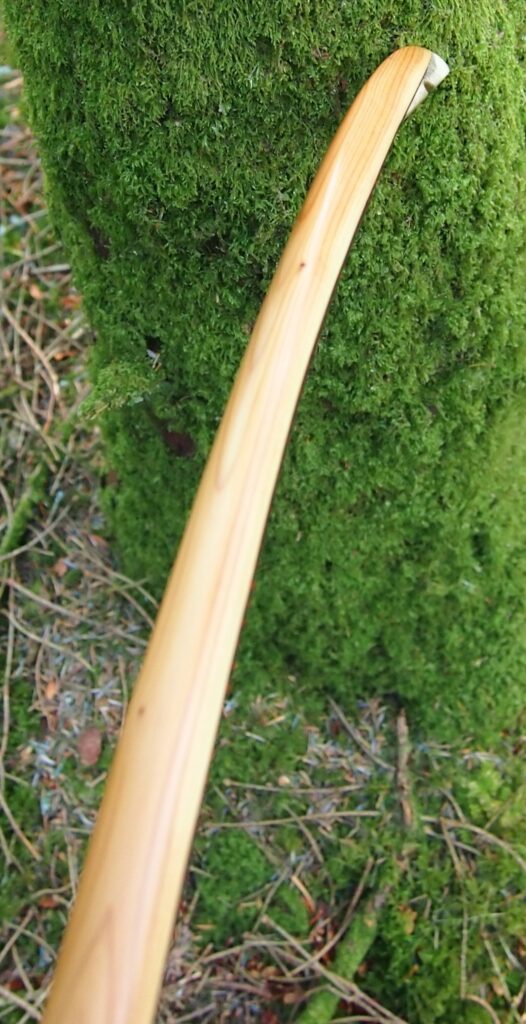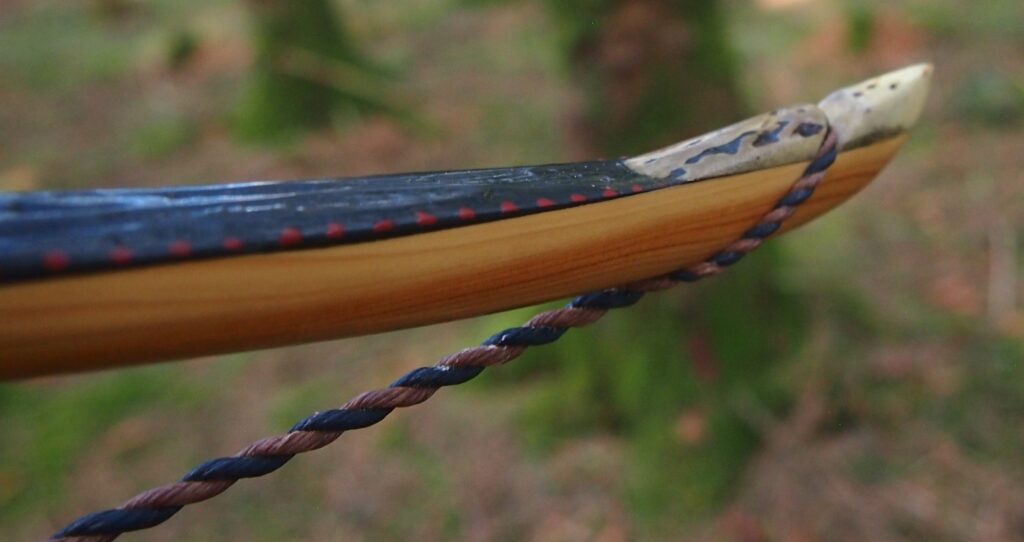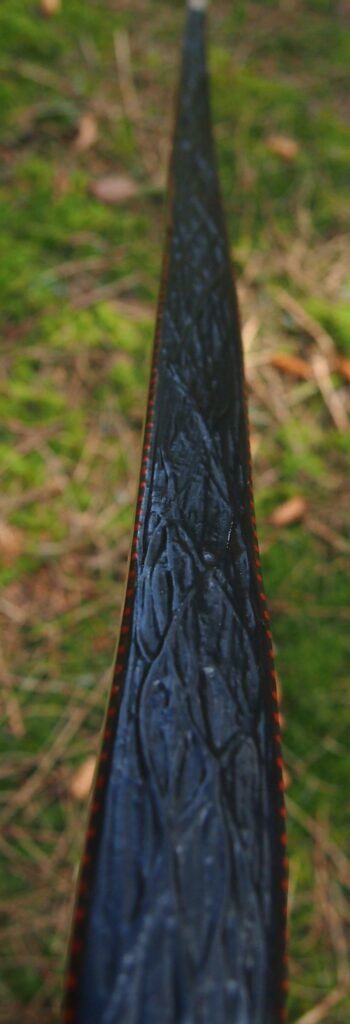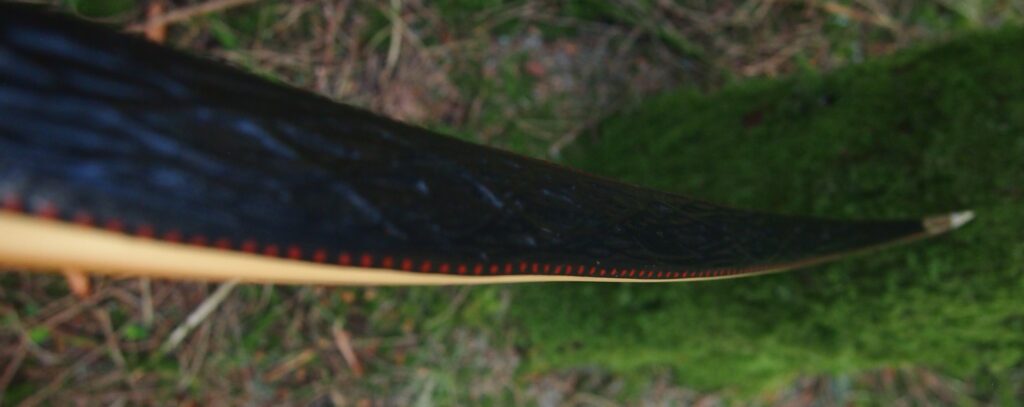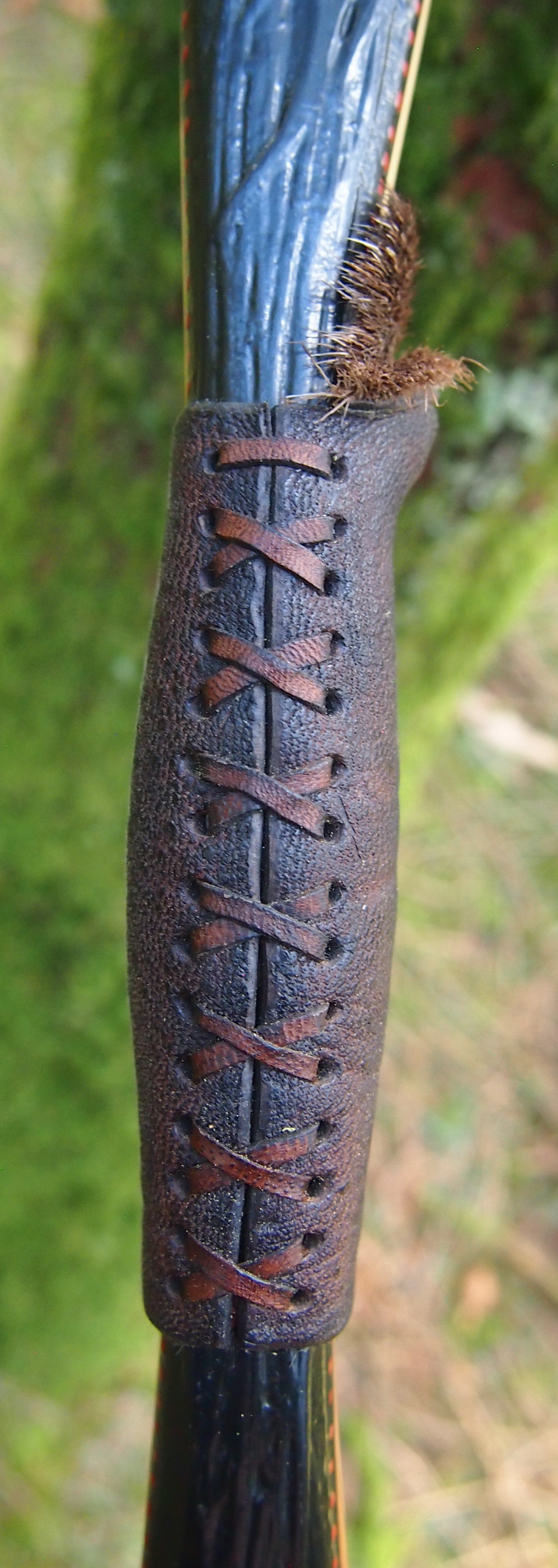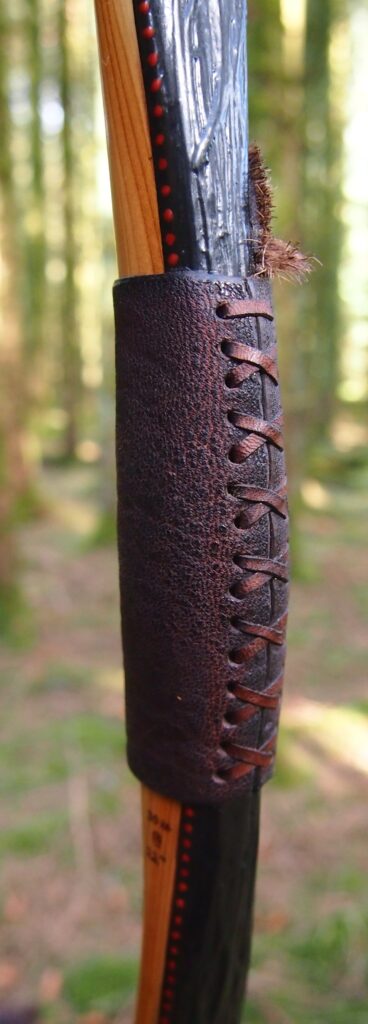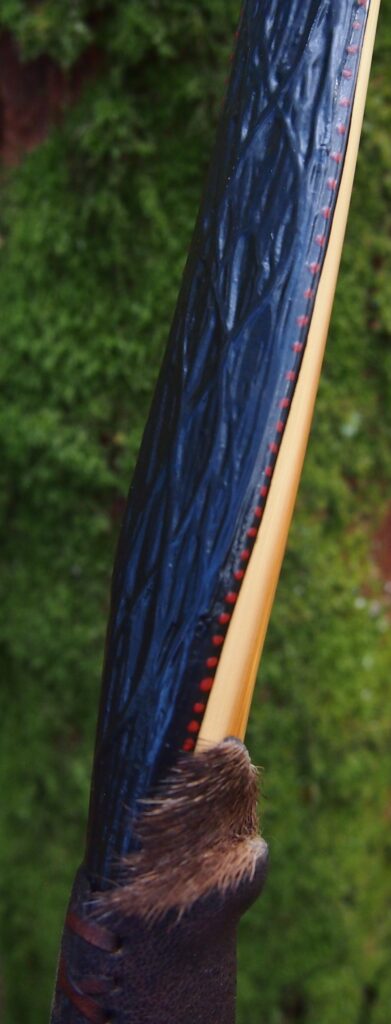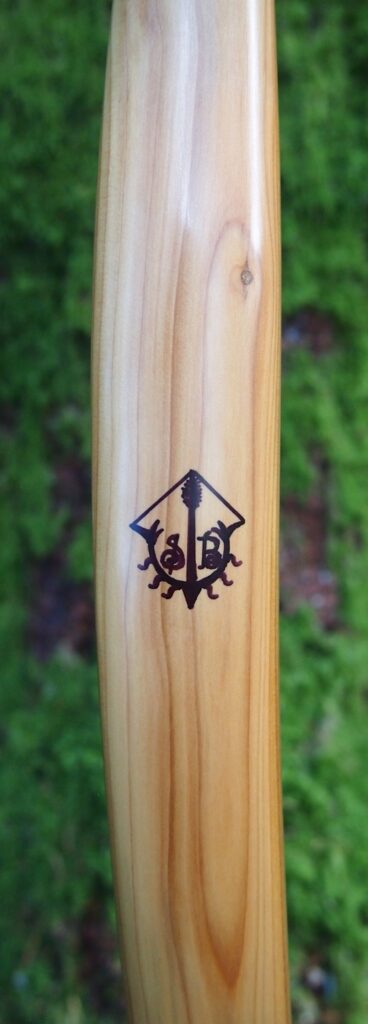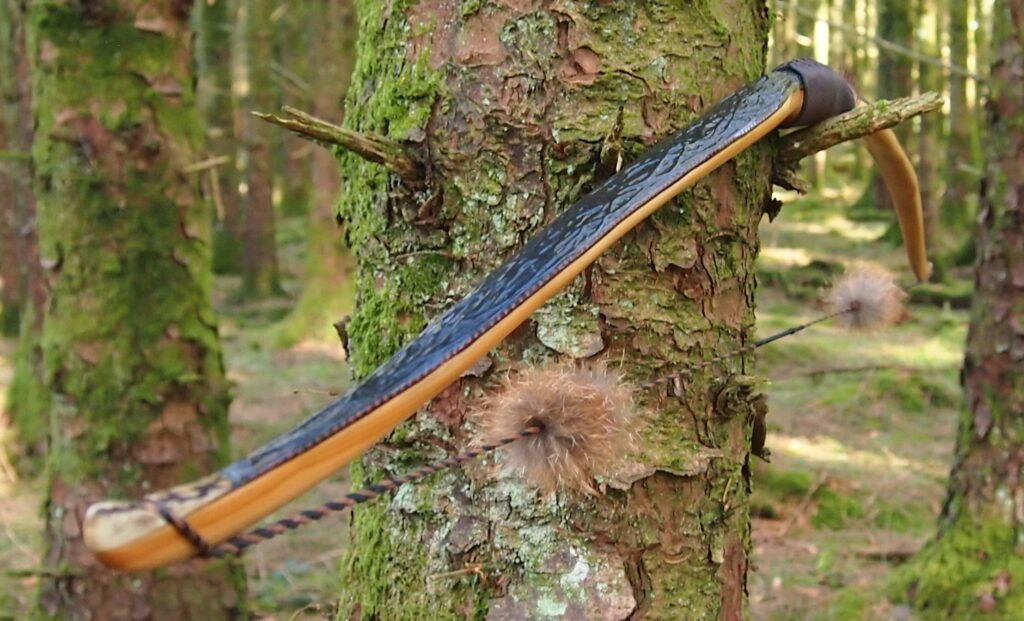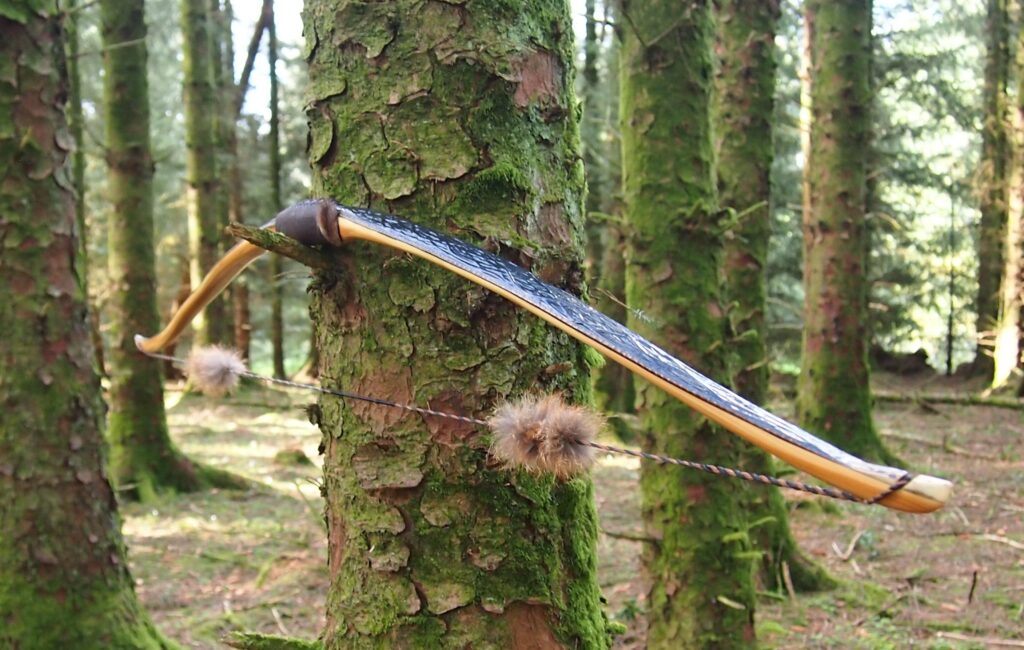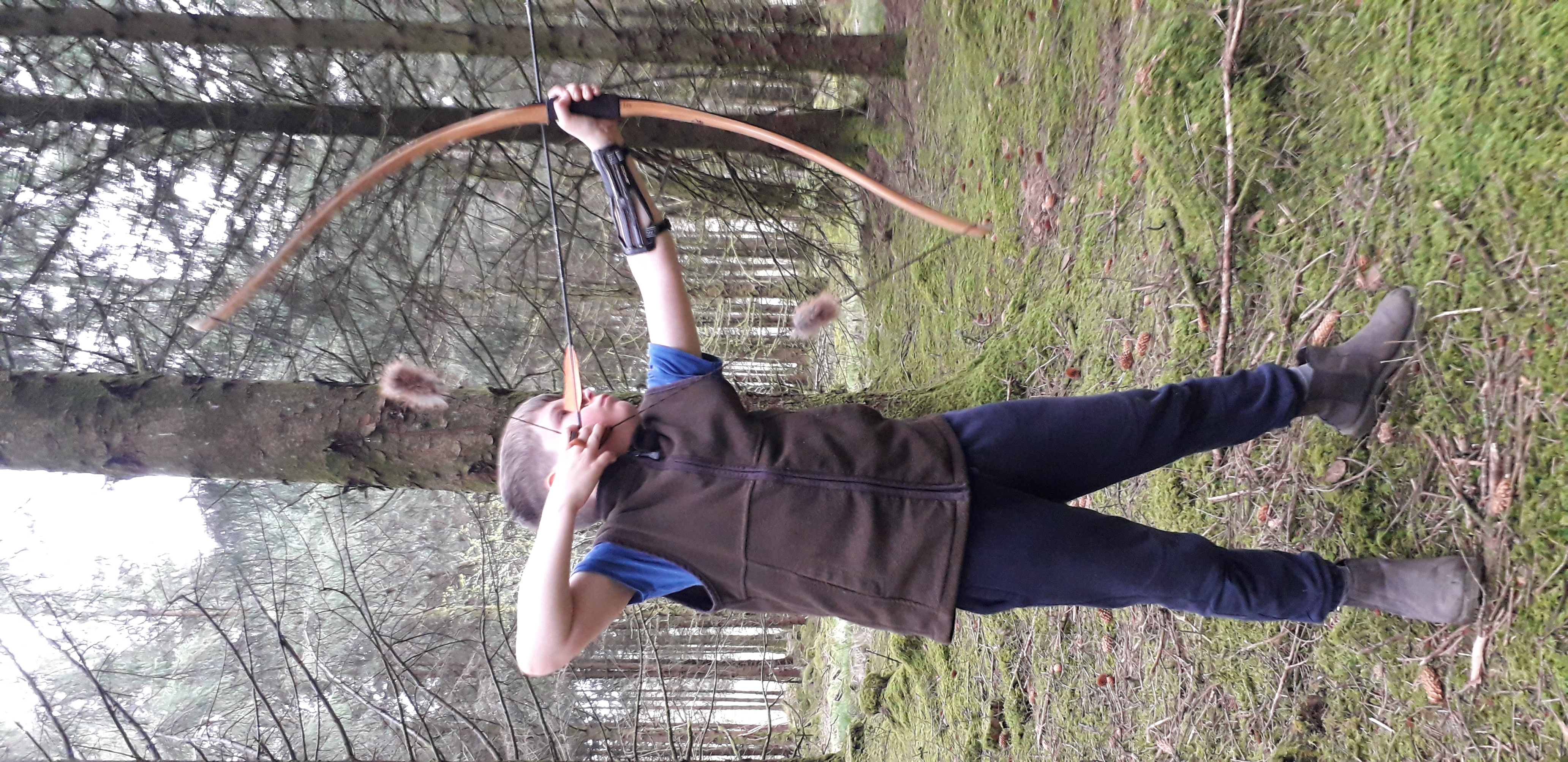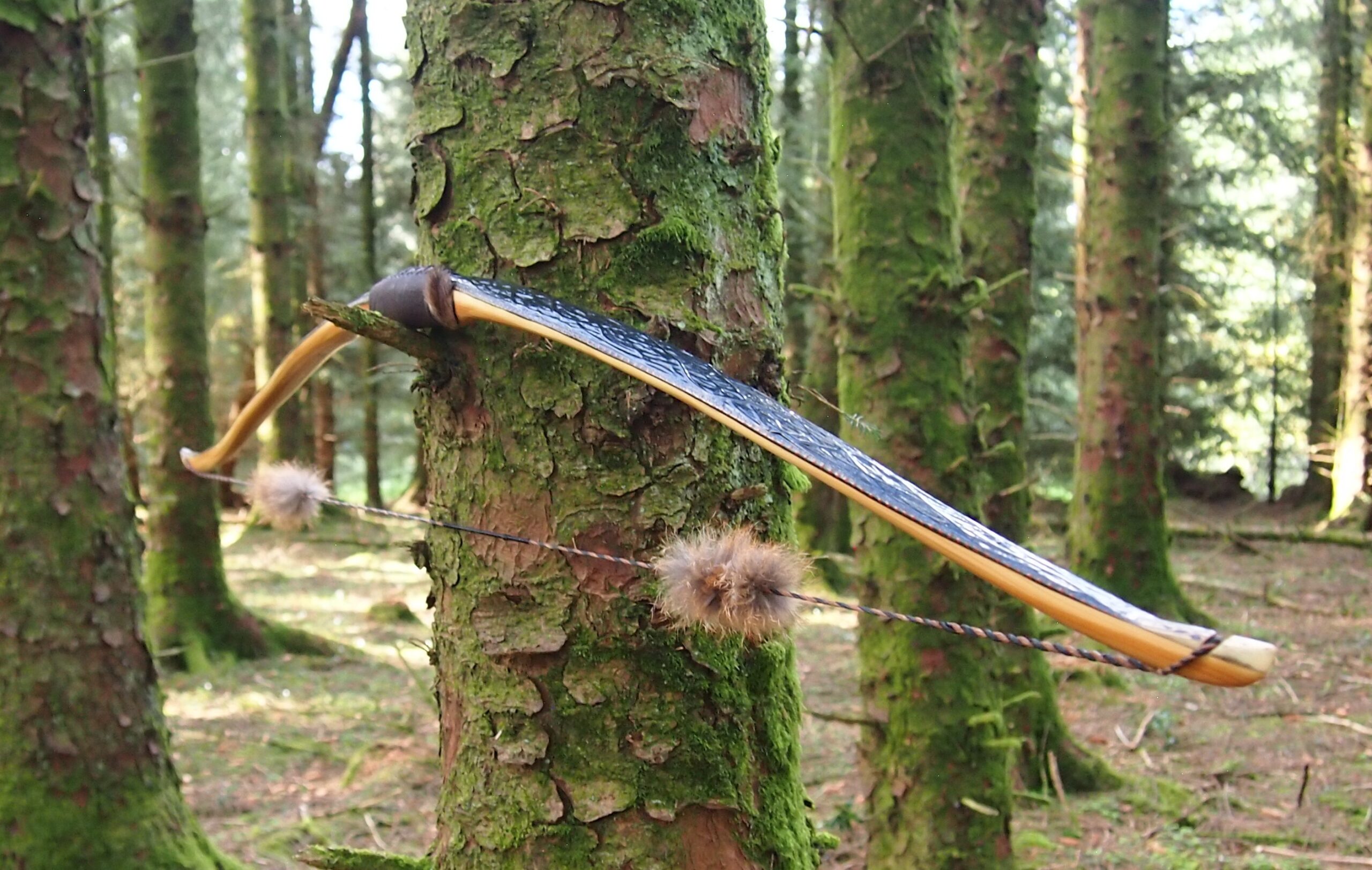About a year ago I came across a short piece of round yew log which I’d kept with the intention of using as a billet. It measured 52″ long and about 3″ in diameter and was really nice and clean. After a bit of contemplation I wondered if I could get away with splitting it straight down the middle and getting two short staves out of it. So I thought I’d give splitting it in half a go.
For once it worked! Normally yew never plays ball when trying to split it, so ordinarily I would have taken it to the table saw, but in this instance I couldn’t be bothered, so I just set to it with an axe and wedges instead! Well low and behold it split just perfect! And no propeller twist evident either!
So now I had two nice clean straight, short and relatively thin staves. Should I splice them together and make a light weight full sized bow? Or, should I finally get around to making my kids a pair of proper character primitives, like I’d been promising them for ages. Of course, the kids won!! So this bow is the first of two bows which I made back in 2024. This one in particular is for my 10 year old son, and the other bow (which also came out great) I’ll blog about another time.
My son Ben has been wanting a heavier bow for some time. He’s really grown out of his first bow, a junior recurve which I bought for him when he was only 5. At 15#@ 20″, his recurve is now quite under weight for him and he’s probably drawing more like 22″ now anyway. So in the interest of keeping him excited about archery, I planned on making him something primitive and characterful, with enough punch to get him enthusiastic about flinging arrows again. And hopefully, if it didnt come out too light, it would be a bow that he can properly grow into over the next few years.
I wanted this bow to be a surprise for him, but at the same time, I also wanted to be sure that I built him something which he’d like the appearance and feel of. So in the interests of getting it right first time, I asked him to go through my collection of primitive bows and point out which style of primitive bow he liked the most. He chose the R&D sinew backed elm bow which I blogged about here:
He told me that he liked the shape (R&D pyramidal) and that he loved the rustic sinew backing effect that I’d created with that particular bow. He also made it clear that he wanted antler tip overlays, an arrow shelf cutting into a static handle, and a rustic leather grip. So now I knew what he liked, I set to work on one of the two yew staves with a plan to build a similar looking bow to the one he’d picked out of my collection, only made from yew and way more suited to a small, but rapidly growing young man!
After roughing the stave out to something close to final dimensions, I spent a bit of time heating a nice even Reflex/Deflex side profile into it using a mixture of steam and dry heat applied whilst using a shaping form I built a while back specifically for kids bows.
The sapwood was only about 1/4 – 5/16″ in thickness so I just left the back of the stave as it was directly under the bark. Ben had already made it clear that he wanted his bow to be sinew backed “like the Indians did”, so after I had the bows shape and profile locked in, I sinew backed it with red deer leg tendon sinew applied with TBIII, and parked it in a dry, cool place to cure for 6 months.
After waiting through the entire summer and autumn of 2024, the stave was finally ready to dig out of slumber so I cut some temporary nocks into and got it on the tillering tree. Within a couple of hours I had the tiller pretty much done but was a little concerned the weight was still too heavy. And at 40lbs at 18″, I was right!
By reducing the limb width a bit I managed to shift about 5lbs of draw weight without moving the tiller off, but I still had at least another 8lbs to get rid of before I could close the gap on the target draw weight of around 30Lbs at 22″. So I carefully scraped away at both limbs checking constantly for tiller change until I reached around 30lbs at 20″
Happy that the rest would probably fall off through shooting in and final sanding, I shaped the handle, cut in an arrow shelf and took it out for a spin in the woods with a hand full of 350 grain 35# stumping arrows which I’d built to accompany the bow when I gift it to Ben. They were a little stiff so I ended up keeping them a tad longer than I normally would so as Ben’s draw length increased with his age, his arrows should still be safe for him to use. Hopefully I’d just reduce the point weight as his draw length increased to keep them flying true.
I had a wail of a time over the next few day trying to shoot a 22″ draw without an anchor, and have to say, I actually got half decent at snap shooting from the hip like the Comanche did in the archery videos Ben’s been watching lately on YouTube ! After a couple hundred arrow and a good bit of fun the tiller seemed to be holding just fine, well for split fingers at least, (pinch grip not really being my thing!) So I decided to move on to finishing touches.
Tip overlays from red deer antler went on easy enough and once I had them shaped up, I could envisage going really fine with the tips so as to create a really sharp but elegant look to what is after all a rather petite bow. And of course by minimising the mass in the tips, I would also help to ensure that this little bow was maximising energy transfer to those nice light arrows.
Whilst I had the rasp out thinning down the tip tappers, I also saw fit to do a bit more handle shaping which brought the grip into a nice comfortable shape. Ben is a bit finicky about bow grips and hates bulky handles! This handle now had a slim profile and a slightly dished out belly side to it, which felt really natural in the hand. I figured he’d like that. I certainly did!
Ben had said that he wanted the same textured sinew effect on his bow that I’d done with the Elm primitive he’d selected from my bow collection. So Instead of filling and smoothing out the rough sinew on the back like I often do before adding snake skins etc, I simply gave it a light sand to knock off the snaggy raised ends of of the sinew stands. Then after sanding the whole bow, I masked off the belly and edges of the bow, and painted the whole sinew backing jet black with a paint made up of shelac and my local Bideblack earth pigment.
As a bit of a edge decoration I painted a row of red earth pigment dots along both edges of the sinew backing to give a buffer to where the black met the light coloured sapwood along the edge. And after writing on the draw weight/length and adding my bowyer’s motive, I sealed her up with Danish oil, topped off after polishing with my favourite paste wax.
For the grip I fitted a nice rustic natural bark tanned piece of roe deer leather sticked up with a thinner piece of the same material cut into thin leather lace. The cut leather edges of the grip and lace where then “aged” with Iron chloride to create that natural patina look that old worn leather gets on its edges. A coat of the same paste wax I used on the wood was applied to the leather grip and polished up to give a nice low gloss/satin water proof finish. The arrow shelf/pass was then treated to a couple of pieces of bark tanned “hair on” red deer shin leather to add a nice rustic, primitive look whilst maintaining functionality and durability.
Ben was absolutely over the moon when I presented the bow to him. Of course he wanted to take it out right away and shoot it, but since it was dark outside, I managed to get him to wait until the next day! He had a great time zipping his arrows off at stumps situated off in the next county, and proceeded to loose two of his new arrows in the process! Doh!! But never the less he had a blast, and has shot his new bow many times since with a newly rejuvenated enthusiasm for archery!
Despite Ben not quite yet being able to get the bow all the way back to his normal 22″ draw length, he is definitely getting it back to around 19-20″ now more often than not. So he’s probably drawing something like 25 ish lbs from his new bow at the moment. Which is still a lot more than his usual 15lbs! And he could immediately see how much more speed and power his new bow had in comparison to his little old recurve.
Anyway, I hope you like the photos below. If you like the look of this bow and think that your child might like something similar built for them, feel free to get in touch as I will consider commissions for unique pieces of work like Ben’s bow. Either message me through the contact page on this website or contact me through the Southmoor Bows Etsy shop and we can discuss designs/materials/prices etc.
Here are the stats for Ben’s bow. Keep an eye out for the sister bow to this one, which I’ll post about very shortly! Until then, may your arrows fly true!!
Design: Reflex Deflex, Symetrical Pyramidal longbow
Draw Weight: 30lbs at 22″
Mass: 440 grams
Length NTN: 49”
Width: 1 3/16” at widest part
Tips: 4” static 3/8” wide
Back: Crowned with sinew. Pyramidal face profile
Belly Profile: Working limb sections D shaped, transitioning at the tips to ridged cross section.
Tiller: Elliptical. 1/8” positive
Brace height: 5″






